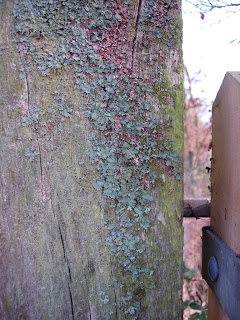
The sheep have finished aftermath grazing and have now left the meadows. However, whilst at Martin's Meadows they took advantage of the peace and quiet to make some preparations for the festive period. Some of the sheep are quite musical and have formed a 'Baa Baa' shop quartet and produced their own unique rendition of 'We wish you a Merry Christmas'. My blog and uploading skills are not yet sufficient to bring you the full 'a cappella' sound and lights version - but hopefully the picture will give you an idea of their "we don't just eat grass you know" attitude and talent. I have been impressed by the progress they have made in just a short time. One is a particularly good Baa-ritone!
I should just point out that figgy pudding is not a suitable food source for sheep and is mentioned in the context of the song only. In addition, there are restrictions on supplementary feeding on many of our sites - so demands for figgy pudding should not and will not be met!
On a more serious note - Happy Christmas from the Five Meadows Blog and thank you to all who have helped with the meadows' management and care during 2011 - I could not have done it without you. Here's to a good 2012!












